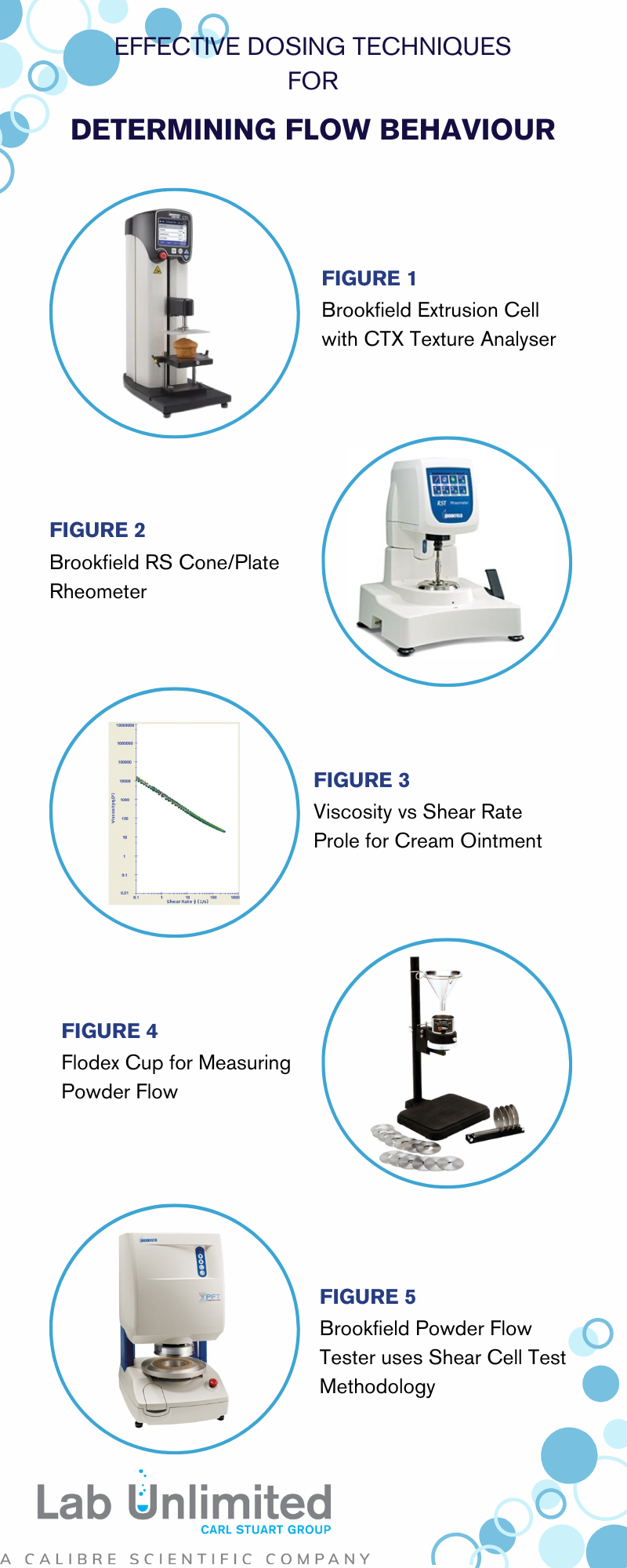
Effective Dosing Techniques for Determining Flow Behaviour
Dosing is a crucial step in the production of consumer products, where manufacturers strive for smooth operations. Two key factors that impact acceptance are the volume of material in each dose and the correct proportions of constituent ingredients. This article addresses dosing techniques for both liquid and powder-based products. Research and development (R&D) play a pivotal role in ensuring accurate dosing for manufacturing. Scaling up from lab bench tests requires realistic process conditions simulation.
For liquid products, the use of a texture analyser with an extrusion cell can provide insights into the flow behaviour by mimicking the process of material being extruded from an opening with a known diameter (see Figure 1). This testing method aims to measure the force required to expel the product and the amount of material extruded in a given time. By employing discs with different diameter openings in the cell, it is possible to simulate various nozzle configurations, providing valuable data on extrusion rates.
Another commonly used approach is viscosity measurement. By subjecting the material to shear forces using a cone/plate rheometer (see Figure 2), the viscosity profile can be determined by varying the shear rate (see Figure 3). This viscosity data can then be correlated with the nozzle size required to achieve the desired volume flow rate. To ensure accuracy, it may be useful to compare the results of this analytical approach with experimental findings obtained from tests using a texture analyser. Together, these techniques can strengthen the conclusions drawn regarding the flow behaviour of the liquid.
In the case of powders, a different methodology is required. The widely used Flodex Cup (see Figure 4) allows the powder to flow out through a hole at the bottom, providing a basic indication of its flow behaviour. Alternatively, the shear cell method offers a more practical but expensive approach. This technique involves compressing the powder to a specific pressure and shearing it against itself to measure the internal friction between particles. The data output is a flow function that predicts the powder's flowability, based on the level of fill in the storage bin.
For powders composed of blended materials, preventing segregation during discharge through a hopper is crucial. The best way to address this is by designing the equipment to achieve mass flow behaviour. Shear cells offer the capability to conservatively design hopper opening sizes and hopper half angles, incorporating conventional engineering calculations within the software (see Figure 5: Powder Flow Tester).
This overview showcases advanced technical approaches utilised by companies to optimize dosing for desired effects. As industry leaders in this field, we are well-equipped to provide guidance and insights. For a thorough understanding, interested individuals are encouraged to direct the inquiries to us, as we specialise in evaluating flow behaviour in dosing processes.
As a leading provider of innovative tools like texture analysers and rheometers, we ensure precise evaluation for both liquid and powder-based products. Our committed team enhances manufacturing accuracy. For tailored solutions, contact Lab Unlimited—where precision meets performance.
|
To Find Out More: |

